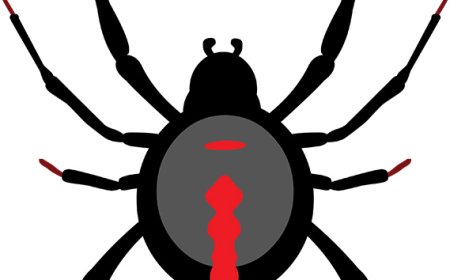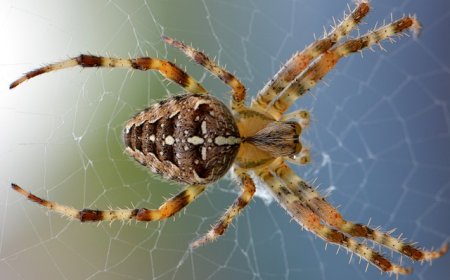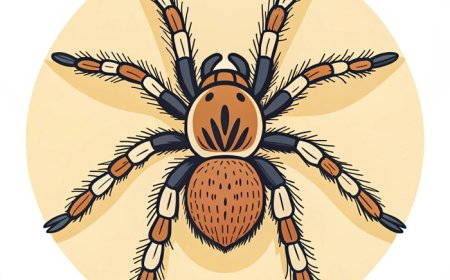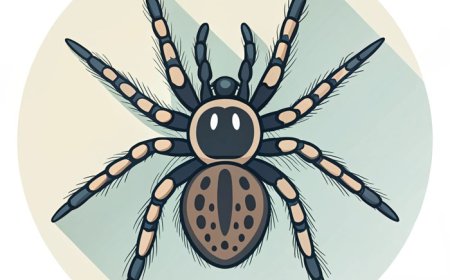Jumping Spider Guide: Tiny Acrobat of the Spider World
Jumping spiders are small, colorful, and full of personality. Learn how these amazing arachnids use their powerful legs and sharp vision to leap, hunt, and explore.
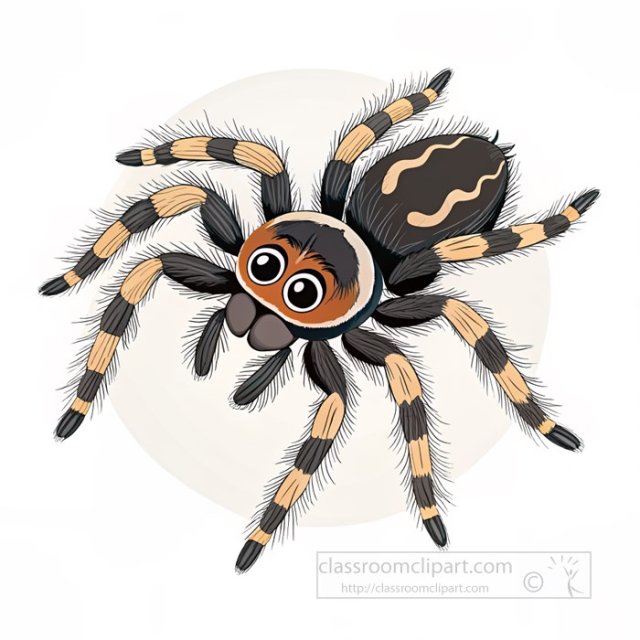
🧠 Introduction
Jumping spiders are among the most fascinating and fun-to-watch spiders in the animal kingdom. They are tiny, fuzzy, and full of energy, often spotted darting across leaves or windowsills. Unlike many spiders that use webs to catch their prey, jumping spiders rely on speed, stealth, and excellent eyesight to leap onto insects like miniature hunters.
With over 6,000 species worldwide, jumping spiders are also one of the largest spider families, known scientifically as Salticidae. Their bold behavior, unique looks, and surprising intelligence make them favorites among scientists and nature-lovers alike.
🔍 What Do Jumping Spiders Look Like?
Jumping spiders are usually very small, ranging from about 0.1 to 2.5 centimeters in length. They have compact, sturdy bodies, short legs, and often appear furry or covered in colorful scales. Some species are plain brown or gray, while others display bright, metallic colors like green, blue, or red.
One of their most unique features is their eyes. Jumping spiders have four pairs of eyes, with two large, forward-facing eyes that give them excellent vision—some of the best of any spider. These big eyes make them look a little like tiny cartoon characters and help them judge distances when jumping.
💨 How Do They Jump?
As their name suggests, jumping spiders are experts at leaping. They don’t use muscles to jump—instead, they increase the blood pressure in their legs, which gives them the power to spring forward suddenly. Some jumping spiders can leap up to 50 times their body length to catch prey or escape danger.
Before jumping, the spider always attaches a safety line of silk to the surface it’s standing on. If it misses or falls, it can climb back up using the silk thread. This “spider bungee cord” is one of their many clever tools.
👀 Sharp Vision and Clever Behavior
Jumping spiders are known for being incredibly curious and aware of their surroundings. They use their keen eyesight to explore, hunt, and even recognize moving objects or changes in light and color. Unlike many spiders that react only to touch, jumping spiders actually watch and track their prey with their eyes—like tiny hunters with binoculars.
They also have fascinating behaviors, especially during courtship rituals. Males often perform colorful dances, waving their legs or bodies to impress females. Some species even produce sounds or vibrations during these displays. If the female likes the performance, she may allow him to mate. If not—he’d better jump away fast!
🍽️ What Do Jumping Spiders Eat?
Jumping spiders are active daytime hunters. They mainly eat insects and other small arthropods, such as flies, moths, mosquitoes, and ants. They sneak up slowly and then pounce like a cat, grabbing their prey with their front legs and delivering a quick venomous bite to subdue it.
Because they don’t build webs to trap food, they depend on their agility and vision to be successful hunters. Some species are even known to eat other spiders, and a few have been observed drinking nectar or feeding on pollen, making them one of the few spiders with an occasional taste for plant food.
🕸️ Do They Build Webs?
Jumping spiders don’t spin webs to catch food, but they do use silk in other smart ways. They create tiny shelters or "sleeping bags" under leaves or in cracks where they can rest safely at night. They also use silk as a dragline for balance when jumping or climbing.
Some species will spin egg sacs inside their shelters, where females protect their eggs and sometimes even stay with the young after they hatch. These spiders are more nurturing than many other species.
🌍 Where Do Jumping Spiders Live?
Jumping spiders are found on every continent except Antarctica. They live in a wide variety of habitats, from rainforests and grasslands to deserts and cities. You might see them in your backyard, on a windowsill, or even on your desk near a sunny window.
They love to explore sunny, open areas where they can spot insects. Because of their small size, they are often overlooked—but once you start noticing them, you’ll see them everywhere!
🌟 Fun Facts About Jumping Spiders
Jumping spiders can leap over 20 times their body length!
Their big, front-facing eyes give them 3D vision, much like humans.
Some species, like the peacock spider, have bright colors and perform dances during mating.
Jumping spiders often turn to look at you when you move—they're as curious about you as you are about them!
Scientists study jumping spiders to learn about vision, memory, and learning in small animals.
👧 Kid-Friendly Summary
Jumping spiders are tiny, fuzzy spiders that don’t build webs to catch bugs—they hunt by jumping. They have big eyes, great vision, and colorful bodies. You can find them in many places during the day, and they help by eating annoying bugs like flies and mosquitoes. They’re not dangerous and are fun to watch if you look closely.
📚 Vocabulary Words
Salticidae – The scientific family name for jumping spiders
Pedipalps – Small leg-like mouthparts used for feeding and sensing
Courtship – The behavior animals use to attract a mate
Dragline – A silk line used for balance or safety
Arthropod – An invertebrate with a hard outer body and jointed legs
3D Vision – Seeing depth, distance, and shape clearly, like humans do
Venom – A substance used to stun or digest prey
Habitat – A place where an animal lives and finds food and shelter
❓ Interactive Quiz (8 Questions)
1. What is a jumping spider known for?
A. Spinning large webs
B. Living underwater
C. Jumping to catch prey
D. Flying through the air
2. How many eyes does a jumping spider have?
A. 2
B. 4
C. 6
D. 8
3. What helps a jumping spider land safely after a jump?
A. Wings
B. A dragline of silk
C. Padded feet
D. Their arms
4. What do jumping spiders mostly eat?
A. Plants
B. Berries
C. Insects
D. Fish
5. Where can you often find jumping spiders?
A. In cold water
B. On tree trunks or windowsills
C. Under the ocean
D. In bird nests
6. What do male jumping spiders do during courtship?
A. Hide in webs
B. Dance and show off colors
C. Sing loudly
D. Glow in the dark
7. How far can a jumping spider leap?
A. The length of its leg
B. 2 times its body
C. Over 20 times its body
D. Not at all—they don’t jump
8. Are jumping spiders dangerous to people?
A. Yes, very dangerous
B. Only if stepped on
C. No, they are harmless
D. Only at night


















































